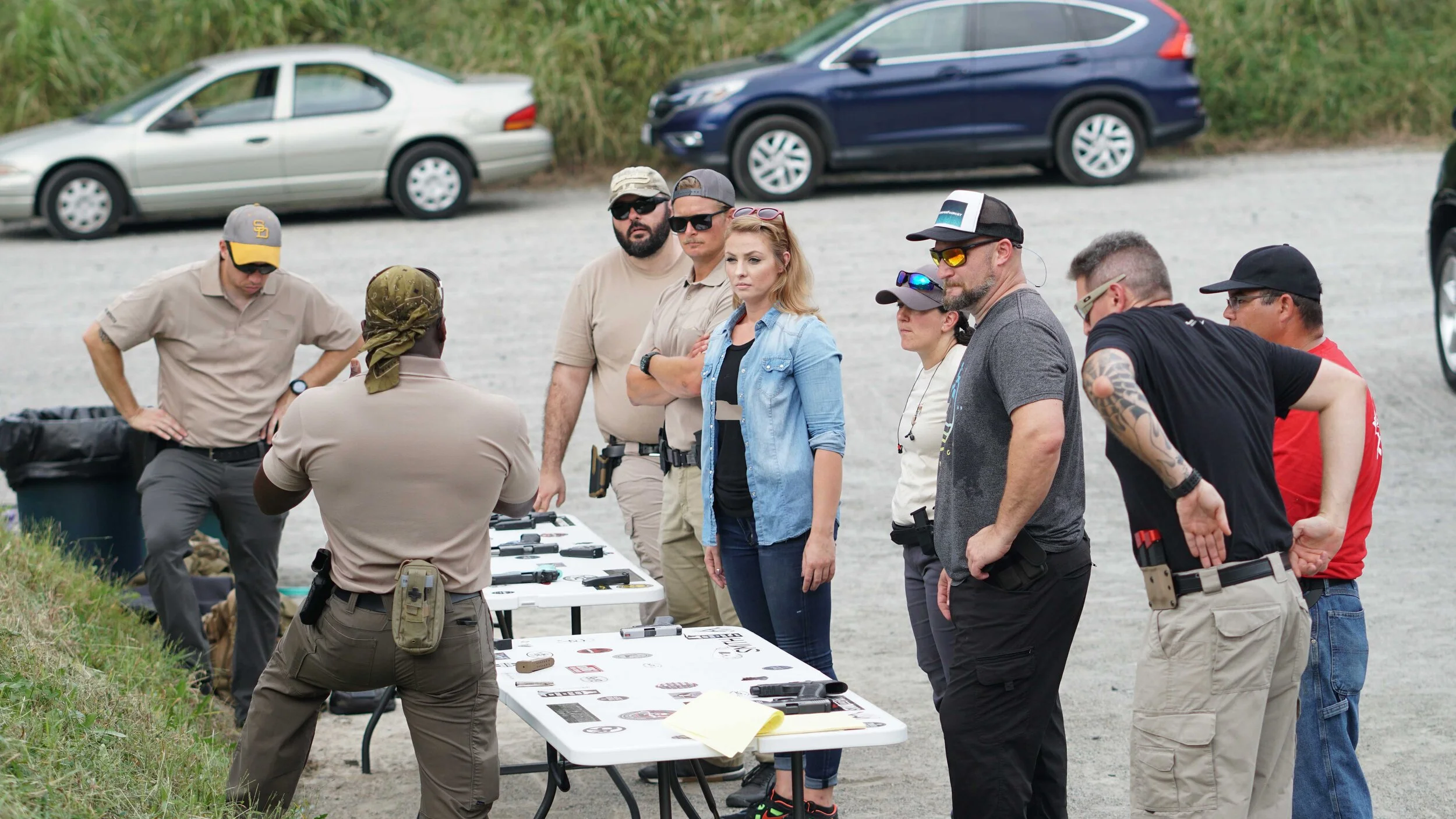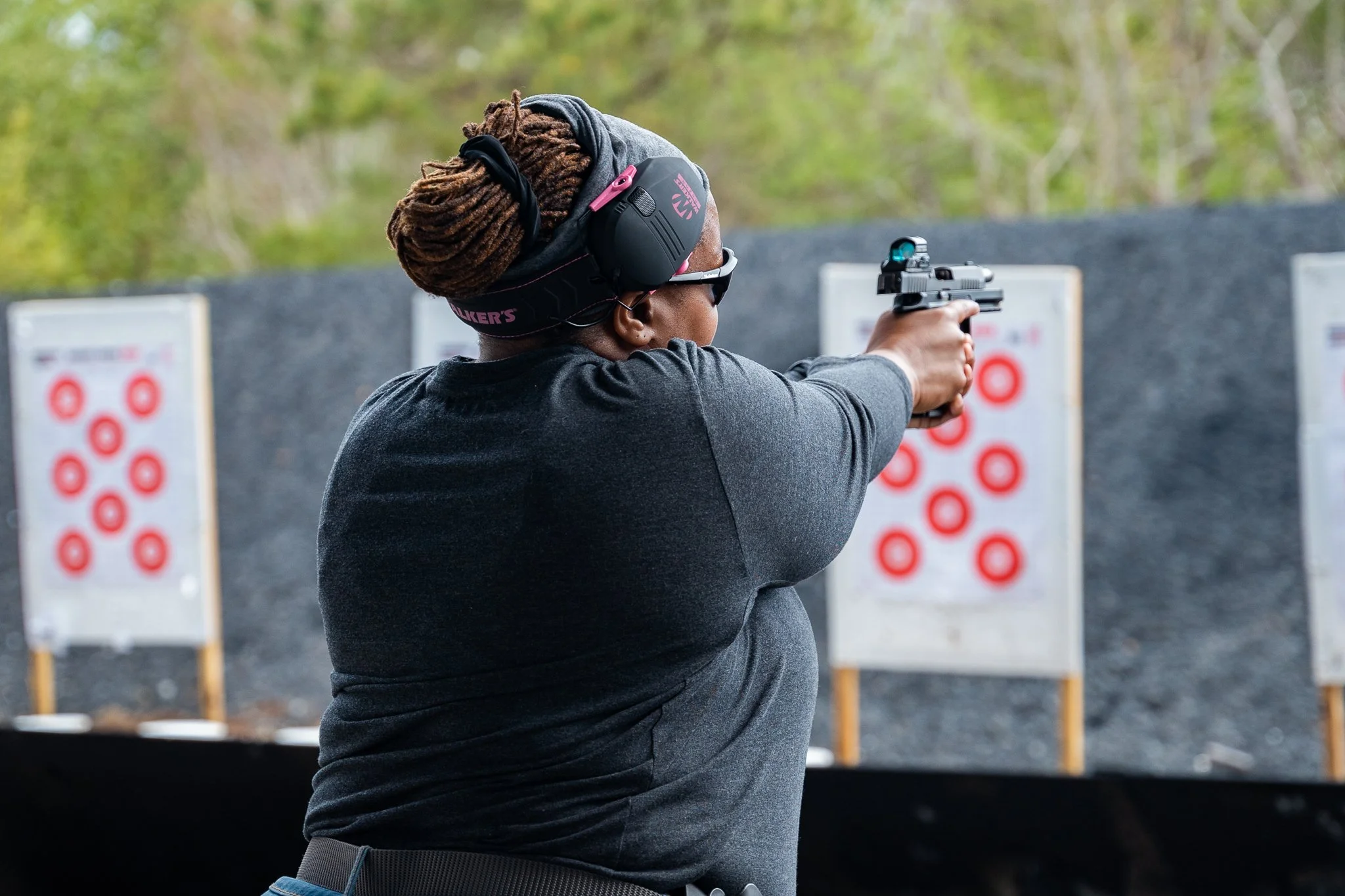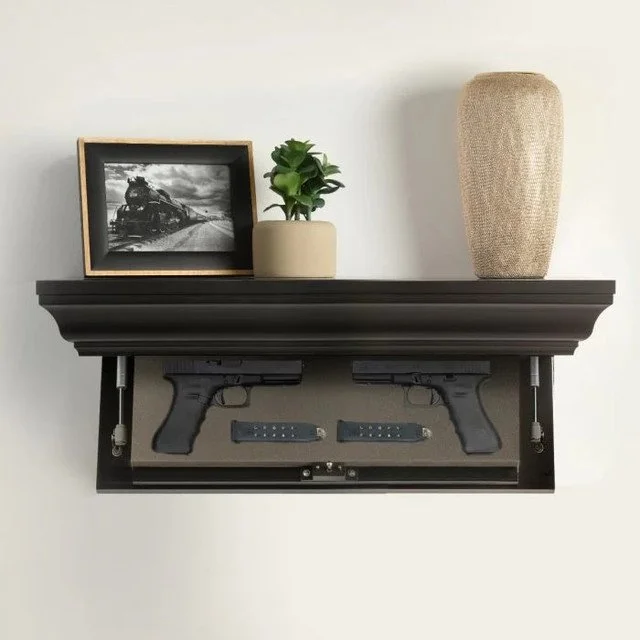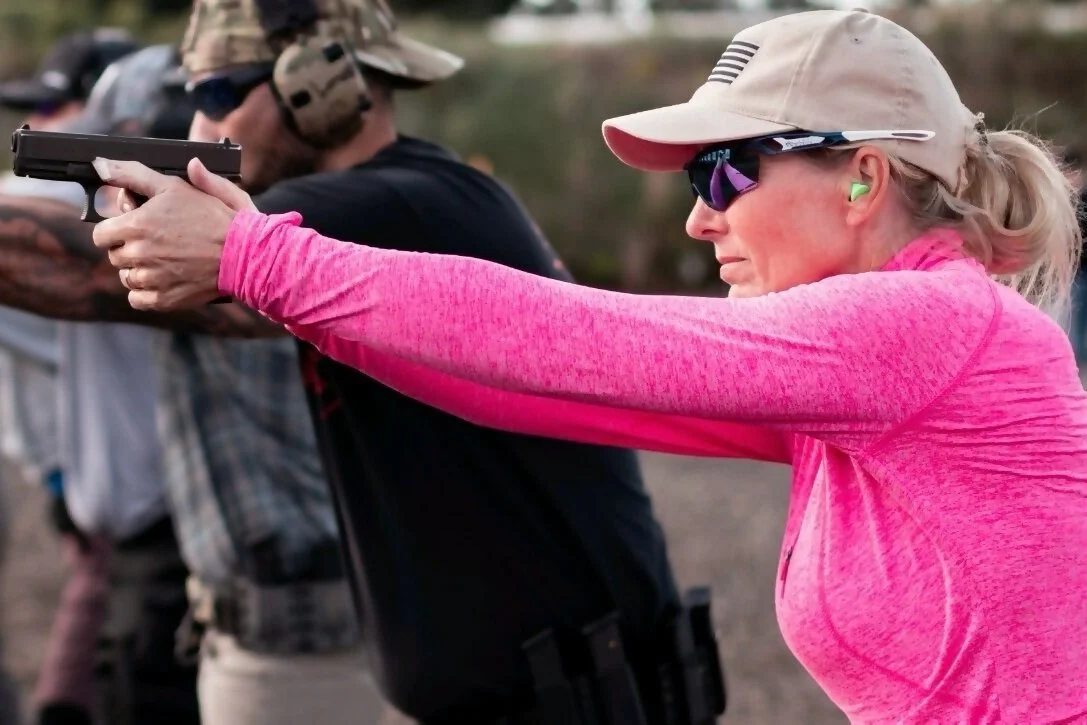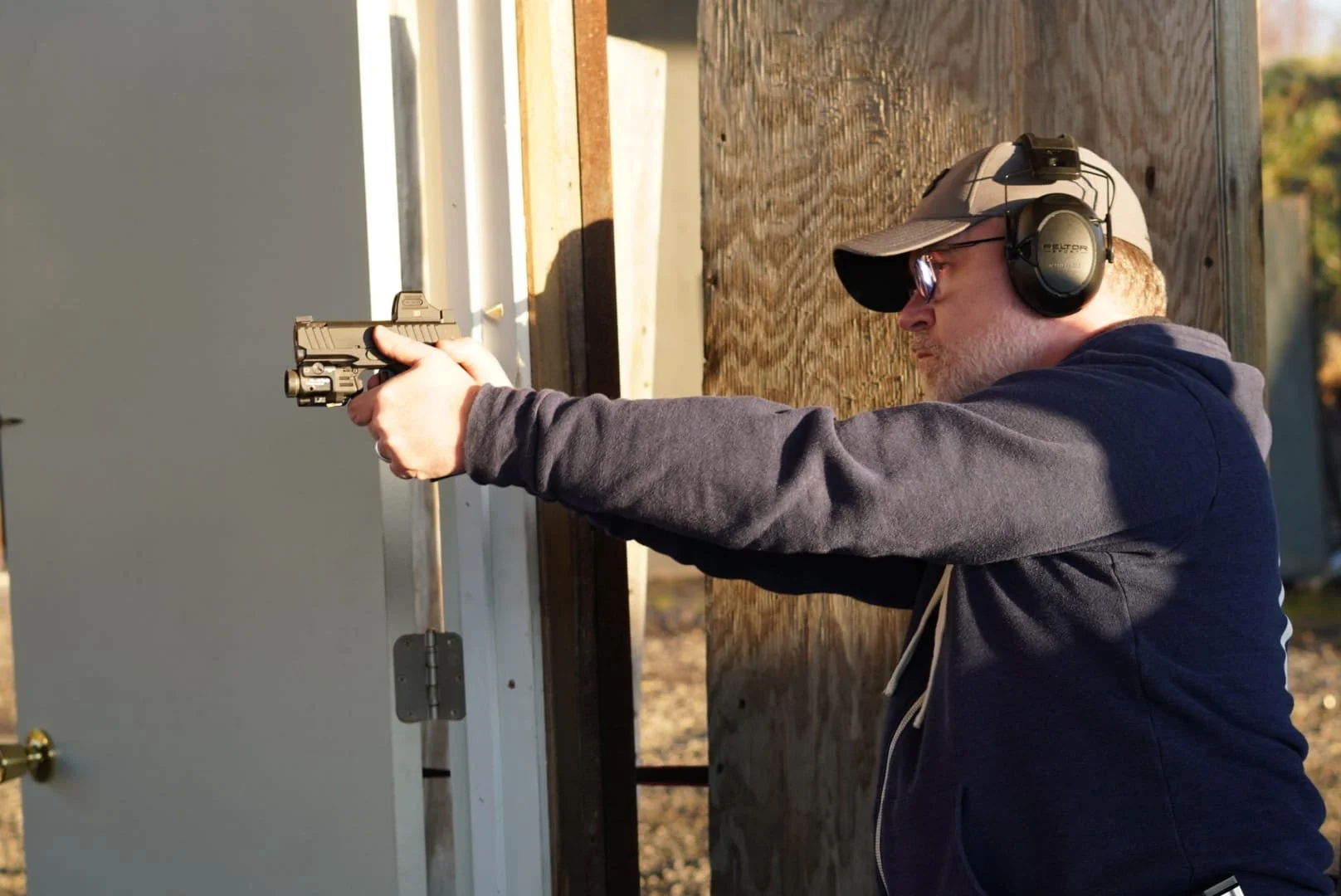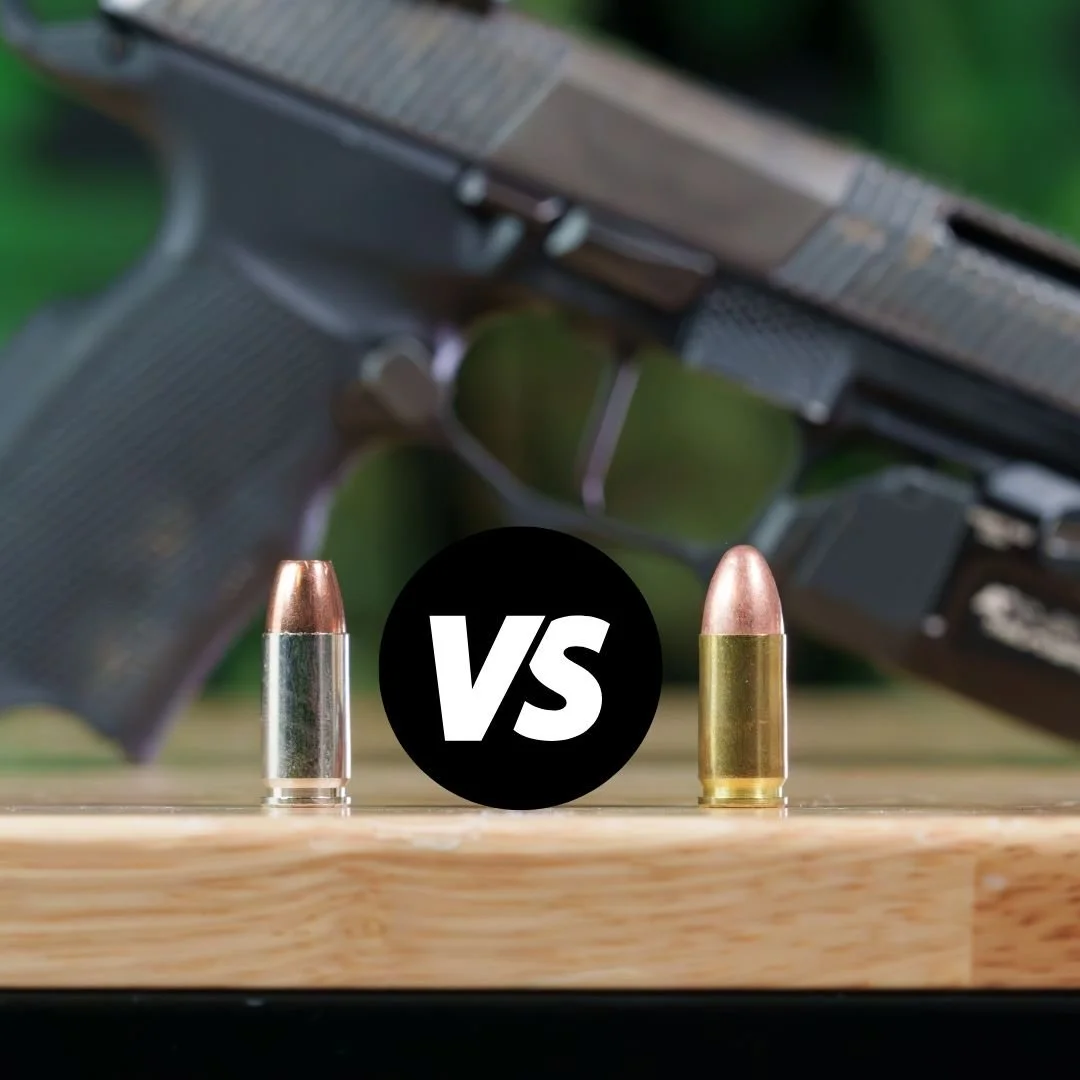At Intuitive Self Protection, we train real people for real-life fights. That means training doesn’t stop when you leave the range. If you want to shoot faster, smoother, and under stress, you need dry fire. But let’s be real: most people start strong, then forget about it a week later. Why? Because they didn’t make it part of their routine. Let’s fix that.
The First 5 Seconds: Speed and Violence of Action
Tactical Fitness
At Intuitive Self Protection, we train for the real world. Not Instagram and not powerlifting meets. We care about one thing: whether you can survive a violent encounter and win. That means your fitness should match the fight, not the gym flex. You don’t need to bench 300 pounds. You need to move fast, stay on your feet, carry weight under stress, and fight when your lungs are burning. This is what we call tactical fitness and it’s what actually matters in a violent encounter.
Women: Stop Teaching Them Like They’re Fragile
At Intuitive Self Protection, we train women to be fighters; not flowers. We don’t shrink the standards. We don’t water down the drills. Because the truth is, the world isn’t going to go easy on you just because you’re a woman. And if the threat isn’t soft, your training can’t be either. What keeps people alive under pressure is mindset, skill, and grit.
Weapon Mounted Light vs. Handheld Light
At Intuitive Self Protection, we’re not here to make you look cool. We’re here to make you dangerous to the people who are threats to your safety. That includes knowing when to use a weapon-mounted light (WML) and when a handheld light makes more sense.
A weapon-mounted light is attached to your gun. Wherever your gun points, your light points. It's fast and easy to use in a fight; especially when both hands are busy.
A handheld light is, well, handheld. You carry it in your support hand and aim it independently from your weapon. It takes more skill to use under stress, but you also have more control over when and where your gun is pointed.
Iron Sights vs. Red Dots
Staging Firearms in Your Home
When facing a threat in your home, you won’t have time to dig through a closet or fumble with a lockbox. Staging firearms means placing them in key locations so they’re accessible when you need them, but secure enough to keep kids, guests, or intruders from getting to them first. Anything less is a liability.
Carrying A Round In The Chamber
When it comes to carrying a firearm for self-defense, one question sparks endless debate: should you carry with a round in the chamber? Carrying with a round in the chamber means your gun is loaded, cocked, and ready to fire the moment you pull the trigger; no need to rack the slide first. It’s the fastest way to get your gun into action. But speed comes with responsibility, and this setup isn’t for everyone unless you’re properly trained. You owe it to yourself to understand both sides of this argument before making a decision.
Trigger Control
The trigger is one of the most overlooked, yet most important, aspect of shooting a firearm. A bad trigger pull can turn a perfectly good shot into a miss. At Intuitive Self Protection, we’re not about wasting ammo or hoping for the best. We teach proven techniques that help everyday people shoot like pros. Let’s break down trigger control and how you can improve yours today.
Should You Carry a Backup Gun?
Carrying a firearm is about being prepared for the worst-case scenario. But what happens if your gun malfunctions, runs out of ammo, or gets knocked out of your hands? Some gun owners solve this problem by carrying a backup gun. Is it a smart move or unnecessary weight? Let’s look at the pros and cons.
Is Your “Safe Neighborhood” Mindset Is Putting You at Risk?
The Most Common Mistakes Gun Owners Make
Being in the self-protection business for as long as we have, we’ve seen people make the same mistakes over and over. These are mistakes that could cost them everything in a real-world situation. Owning a firearm is not enough; you must know how to use it, when to use it, and what happens after you do. Let’s get to the three biggest mistakes gun owners make.
How to Choose Your First Handgun
Revolvers: Old-School Firepower
Revolvers are like the classic cars of the gun world; simple and effective. At Intuitive Self Protection (ISP), we train shooters of all levels, and revolvers are often a hot topic. Firearms enthusiasts appreciate revolvers as a reliable backup, proving that these classics still have a solid role in modern self-defense.
Ammo: Hollow Point vs Full Metal Jacket
You might wonder about the difference between hollow points and full metal jacket (FMJ) rounds. Why does is this important? Because understanding these distinctions could mean the difference between a successful self-defense scenario and a dangerous mistake. At Intuitive Self Protection, we’ve spent years training thousands of responsible gun owners, and we know how crucial it is to choose the right tools for the job. Let’s get into it.
Are Shotguns Better for Home Defense?
Do I Need a Concealed Carry Permit?
If you’re considering carrying a firearm for personal protection, one of the first questions to ask yourself is whether you need a concealed carry permit. We’re gonna break down the essentials; the differences between open and concealed carry, what state laws mean for you, and how to get the training you need to carry confidently and responsibly.
New Gun Laws Taking Effect in 2025
If you’re reading this, you are indeed a warrior. You made it through 2024, and boy was it a crazy year. As we step into 2025, the legal landscape around firearms is making a shift in a few states. From tightening restrictions to expanding rights, these new laws will impact gun owners, enthusiasts, and Second Amendment advocates nationwide. Read to find out what’s changing, where, and what it means for us, the 2A community.
Post-Holiday Fitness
The holidays are a time for family, fun, and if ya know like I know, feasting. Be it Auntie’s famous pie or that second (okay, third) helping of stuffing, the holiday season is notorious for loosening belts and packing on pounds. But as the New Year rolls around, it’s time to shake off the sugar comas, lace up your sneakers, and get moving.
Let’s talk fitness challenges, a powerful way to recover from all that holiday indulgence and set the tone for the new year. The gym will be packed in January with people going hard and fueled by good intentions but by February, most will have bailed. I already know, you’re not "most people". Let’s go past the quick fixes and make this about building a mindset that will carry you through the year. You’ve gotta keep that momentum going in a sustainable way. Start with manageable goals, celebrate small victories, and gradually level up. Make fitness a year-round priority, not just a post-holiday fix.
Emergency Readiness
Some would say we’re living in the best of times and the worst of times and with all that’s going on, maybe it even looks like uncertain times. Every day, the news cycles churn out stories of cyber threats, power grid vulnerabilities, mysterious drones, potential viral outbreaks, and rising tensions (including nuclear) on the world stage. It’s enough to make anyone feel uneasy. But here’s one thing for certain, fear gets you nowhere. Preparation, on the other hand, puts you in control. Having a solid emergency plan is common sense. If nothing bad ever happens, great! But if something does, being ready could be the difference between chaos and calm. Preparation is only half the battle. The other half? Keeping your cool. In high-stress situations, fear can cloud judgment and lead to bad decisions. Focus on facts, think logically, and avoid getting swept up in hysteria. Remember, most emergencies are temporary.
Check out these tips to get you ready for whatever comes your way:
